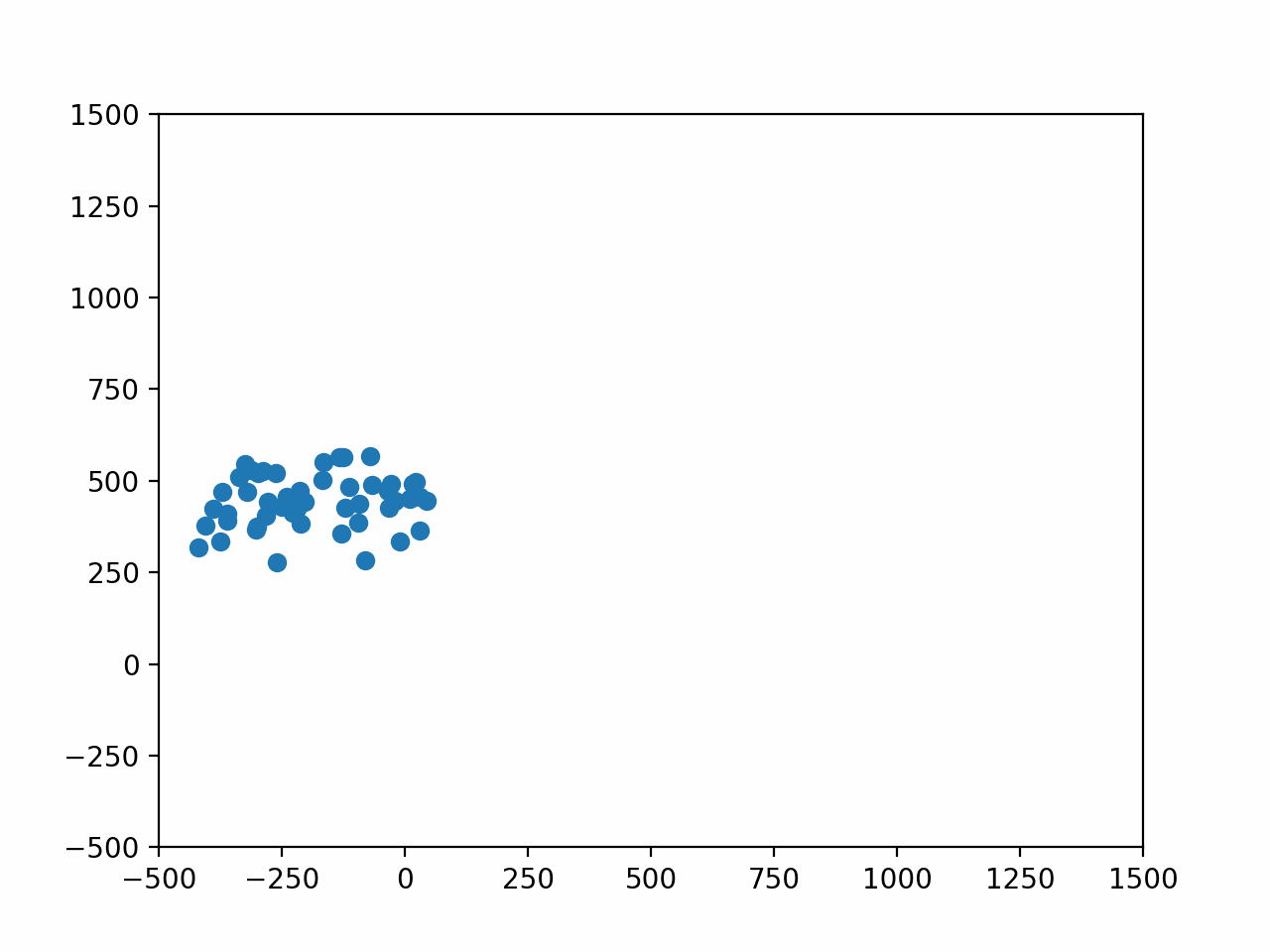7.8 Exercise: Refactoring The Bad Boids
Contents
7.8 Exercise: Refactoring The Bad Boids#
We have written some very bad code implementing our Boids flocking example. We first looked at the Boids in Module 3 (but you don’t need to have seen the previous example to do this exercise). The task is to refactor and improve this initial implementation.
7.8.1 Get the bad boids code#
Here’s the Github link: https://github.com/alan-turing-institute/bad-boids
Please fork it on GitHub, and clone your fork:
git clone git@github.com:yourname/bad-boids.git
# OR git clone https://github.com/yourname/bad-boids.git
7.8.2 Familiarise yourself with the code#
Have a look at the boids.py file in the bad-boids directory and quickly review how it’s implemented.
Then run the code:
cd bad_boids
python boids.py
You should be able to see some birds flying around, and then disappearing as they leave the window, like this:

7.8.3 Regression Test#
First, have a look at the regression test we made in the record_fixture.py file. This saves the before and after state for one iteration of some boids, to the file fixture.yml.
Then, we used this saved state to define a regression test in test_boids.py.
Check the tests pass by running pytest from the bad-boids directory:
pytest
7.8.4 Start refactoring#
Transform bad boids gradually into better code, while making sure it still works, using a refactoring approach.
Each time you make a change:
Ensure the regression test still passes (you may need to update it to reflect any changed functions/classes in your code, but you shouldn’t change the
fixture.ymlfile - the new implementation must reproduce the same results)Do a git commit on your fork, and write a commit message explaining the refactoring you did.
Try to keep the changes as small as possible.
If your refactoring creates any units (functions, modules, or classes), write a unit test for the unit (it’s a good idea to not rely only on regression testing).
Don’t worry about the performance of the code for this exercise. That’s a topic for the “Programming for Speed” module later.
Refactoring Ideas#
You probably won’t have time to do all these in the session, but here are some refactorings we’ve seen in the module that you can try to apply here. We’ve loosely ordered them by where we’d suggest starting, but feel free to focus on the ones you’re most interested in:
Use linters to check and enforce a consistent style
Ensure the code follows PEP8 conventions (e.g. for naming and whitespace)
Consider whether any of the code “smells” and refactorings from 07_04_refactoring apply here
Consider whether there is structure in the code that could be refactored into classes (see 07_05_object_oriented_design for ideas)
Add type annotations
7.8.5 Extensions#
You may also like to apply some of what we’ve learned in previous modules, for example:
Ensure dependencies are specified correctly
Run tests and checks automatically, for example with a GitHub actions workflow
Improve documentation
Make the code into a Python package (e.g. see module06_software_projects/06_04_packaging)

